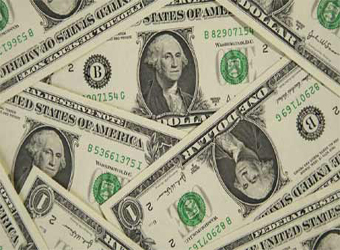The dollar was a touch lower on Wednesday, its modest advance from the previous day bogging down as investors started to take a wait-and-see attitude ahead of Friday’s U.S. jobs report.
The dollar last week hit a two-month high against a basket of currencies as Federal Reserve officials talked up the chances of a rate hike this month, but the greenback is now sitting in a narrow range with an increase seen largely as a done deal.
“The dollar’s upside looks limited as the market has almost fully priced in a March rate hike, with focus now shifting to how many times the Fed can tighten policy this year,” said Junichi Ishikawa, senior forex strategist at IG Securities in Tokyo.
“With attention on whether the Fed can conduct three hikes this year, Friday’s jobs data will provide important cues as to whether an inflation-inducing wage increase is taking place.”
The euro rose 0.1 percent to $1.0561 after declining by about the same amount the previous day.
The dollar index, which hit 102.260 on March 2, inched down 0.1 percent to 101.740. It gained about 0.15 percent overnight, when the dollar was buoyed by declines in European peers.
The pound nudged up 0.1 percent to $1.2210 after dipping 0.3 percent overnight.
On Tuesday, sterling slid to a seven-week trough after weak consumer spending data added to worries that Britain’s economy is slowing as it prepares to trigger its exit from the European Union.
The Swiss franc was little changed at 1.0135 per dollar after retreating to 1.0170 overnight, its weakest since January 11.
The currency had fallen to multi-week lows on Tuesday, hurt by a rise in the Swiss National Bank’s foreign exchange reserves and statements from SNB Chairman Thomas Jordan that the franc was significantly over-valued.
The dollar was down 0.3 percent at 113.650 yen after rising modestly to 114.160 overnight.
The greenback has had a difficult time staying above the 114-yen threshold amid uncertainty about Washington’s potentially protectionist trade stance.
President Donald Trump’s administration is expected to react should the dollar strengthen excessively against the currencies of major trade partners such as Germany, Japan and China.
Masafumi Yamamoto, chief forex strategist at Mizuho Securities in Tokyo, said coming events including the U.S. Treasury’s semi-annual currency report in April are events that could push the trade theme to the fore for U.S. President Donald Trump’s administration.
The Australian dollar rose 0.1 percent to $0.7593. The Aussie had spiked to $0.7633 the previous day after the Reserve Bank of Australia kept interest rates on hold and gave an upbeat assessment of the economy, hinting that it does not intend to loosen policy this year.
The New Zealand dollar fell to a two-month low of $0.6962, hurt by a slide in the price of milk.
Source: Reuters



